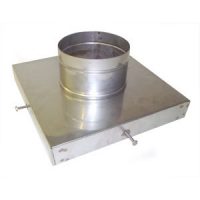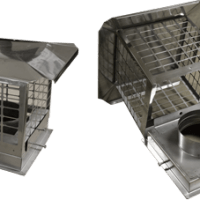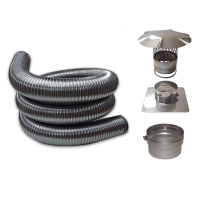Stove pipe is only designed to connect the appliance to the chimney and can be connected to the chimney liner. Stove pipe is not designed to be used outside, to pass thru walls, floors or ceilings.
The main difference between single wall stove pipe and double wall stove pipe is how close you can get to combustibles, such as wood and drywall. Single wall stove pipe needs to maintain 18″ from combustibles. Double wall pipe will reduce the clearances to 6″ to walls and 8″ to ceilings.
As always with stove pipe for wood stoves, the crimped, or male ends always face down. They need to point back to the stove. This is because the creosote is a liquid when it is hot. The liquid creosote will need to drip back into the next pipe and eventually into the stove. This prevents creosote leaking out from the joints.
Should I seal the joints?
Since the chimney has a negative pressure and draws air up through it, any small cracks at the joints would actually draw air into them and not allow smoke to escape. Smoke may come out however if your chimney is dirty or becoming blocked. A bigger concern would be a larger crack would allow too much cool air into the chimney. Too much cool air entering the stovepipe and chimney could cool the gases and chimney down increasing creosote formation. Bottom line; if it brings you peace-of- mind to seal all the joints, then do it with a high temp sealant. If the stove pipe is installed correctly, sealing the joints is not necessary.






